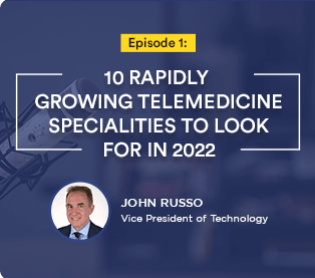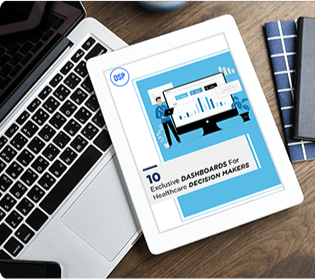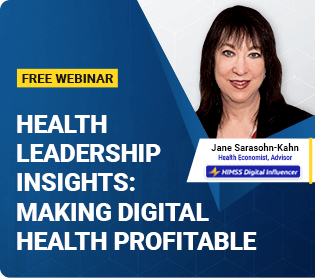As the healthcare industry gradually moves toward an AI-driven world, things previously considered a hindrance are now pretty simple tasks. Over the years, more than 90% of hospitals in the country have moved from paper-based systems to electronic processes. Even for medical diagnosis, patient records are of primary importance. Risks associated with critical illnesses can be caught through predictive analysis, thereby saving lives and costs. Early diagnosis is no longer a distant hope but an actuality easily accomplished through advanced systems.
Accessibility Challenges in Medical Diagnosis
Across care settings, this question of medical diagnosis is something that holds significant importance. 80% of all medical decisions start with a medical diagnosis. With traditional diagnostics, clinicians depend on blood samples and body fluids. Accessibility has always been a critical issue in medical diagnostics. AI technology relies on medical imaging, which increases accessibility.
If a majority of the population is either in a rural setting or in a more urban setting and there are several physicians, the waiting time for a physician comes into play. Sometimes, it can take up to six months if the patient requires a specialist. Even if a patient resides in an area with increased accessibility, the process runs through a typical visit pattern, analyzing which tests need to be conducted and then running the tests. It’s a time-consuming process. It is usually a bit of a journey to look at accessibility to high-quality diagnoses that ultimately lead to the proper treatment at the right time.
Historically, patients being able to go to the physician nearby and have a panel of different tests run has been something where some percentage of the population could do that relatively quickly. Others, either for transportation or cost reasons, find accessibility more challenging. Delayed care is another parameter we have witnessed, especially during the pandemic. Geography, socioeconomic status, and other demographic traits need to be addressed. The healthcare sector has to focus on democratizing access throughout the country.
Impacting Patient Outcomes
The ultimate goal is to impact patient outcomes positively, right? Cost is an important factor within this domain. Whether we are talking about the cost to the end-user and the patient, the cost to the system, or customers, At its heart, the objective is to make healthcare more affordable. Democratizing technology towards medical testing through AI allows patients easier accessibility. The key is to apply a history of data to build AI responsibly, where patient safety is prioritized, along with an efficient adoption process.
The pandemic made us rethink the dynamics of healthcare delivery. Retailers continue to play a key role through a consumer-centric model where patients want to be met and where they want to experience healthcare. Sometimes, that’s outside a traditional medical office building or within the four walls of an acute care setting. It is within these brick-and-mortar locations all across the country. It’s where the potential for AI lies, to make a real impact in meeting those patients where they want to be completed.
Unsurprisingly, when the pandemic hit, backlogs stacked up very quickly for patients who wanted access to care and had an even longer wait time. AI technology then offers accessibility that you can plug into the wall and has been validated to be high quality. It creates a system to work down those backlogs while prioritizing the human capital resources available on higher licensed tasks. Building AI in those care settings where patients can take a few minutes, get diagnosed noninvasively, and have those test results can be significantly meaningful.
Luminetics Core for Diabetic Retinopathy
Diabetic retinopathy is never the starting point. When clinicians look at diabetes and quality of care, the first question is always about A1Cs being under control. Frequently, patients don’t go through an eye exam.
Luminetics Core is a technology that takes medical images of your retina. Within just a few seconds, you can look at those images and diagnose you for diabetic retinopathy and macular edema. It addresses the leading cause of blindness in most developed countries. Anywhere with a power outlet where you could plug the system in, you unlock access to care for any patient that qualifies and needs it. Regarding the naming conventions, you hit the nail on the head.
The real differentiator in this AI technology is that it does not require a physician to conduct an eye exam. Telemedicine has been around for a long time and has done some good in different areas. However, we have yet to see the uptick in telemedicine, even leading up to COVID and indeed, to some extent post-COVID, that we would hope for.
Part of the reason is that there is power in giving a patient, in the presence of a clinician, a result at the point of care, and being able to have a conversation about a referral if need be, and just a holistic view on their health. Autonomous AI technologies are developed with entities like the American Medical Association to bucket these different levels of AI appropriately. The ability to have a real live conversation with a patient has been a game changer for diagnosing and taking the next step in conversation regarding treatment.
AI in dermatology, in the same way, could be as good or better than a human at diagnosing a medical image and can address many of the same problems that are being solved from a patient outcome standpoint in ophthalmology and with retina specialists.
Building Transparency Toward AI
When building an AI model, transparency should run from design through the conceptualization of the technology. Openness about the process is essential for all healthcare entities so that not just consumers but anybody interacting with or coming across AI appreciates the transparency and the traceability of everything that’s happened with this tool.
FDA is a crucial component. Transparency leads to a favorable and solid experience and an appreciation from the consumer about what technology brings to bear. Building trust between the healthcare organization and the consumer is something you can’t take for granted.
Conclusion
Healthcare frontline workers appreciate being able to provide one more key service to their patients so that while they’re there to get their regular checkups, they can also get some specialist-level testing. AI’s focus on the narrow tasks to get patients that need their top-of-license intervention allows for higher patient satisfaction and a better bottom line. Explore more exciting topics and listen to insightful podcasts related to healthcare only on CareTalk.
OSP is a trusted healthcare software development company that delivers bespoke solutions as per your business needs. Connect with us to hire the best talents in the industry to build enterprise-grade software.

How can we help?
Fill out the short form below or call us at (888) 846-5382
Discuss Your Project Handover with a team of expert Book a free consultation arrow_forward
About Author

David Williams linkedin
David, co-host of CareTalk Podcast, articulates his passion for digital health, technology-enabled services, and AI. His podcasts cover many intriguing healthcare subjects to guide stakeholders to a better future in healthcare.

Seth Rainford linkedin
Seth Rainford is the President and Co-Founder of Digital Diagnostics. With a career dedicated to strategic leadership and talent development, Seth has developed skills in maximizing growth opportunities and solving complex healthcare challenges.






















